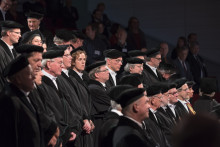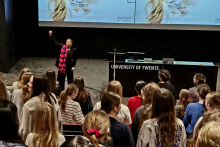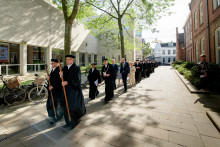Most deans and heads of university institutes are still male, however. The same applies to members of executive and supervisory boards. But more and more women are joining these bodies, says the LNVH.
Making progress
Women are making progress into leadership positions. Some 20.3 per cent of all faculty deans are now female, compared with 14.7 per cent in 2017. And there have been similar increases in women directors of educational institutes (up from 34.8 to 39.9 per cent) and research institutes (up from 7.5 to 17.6 per cent).
There are currently 31 women and 41 men on university supervisory boards, a slight increase compared with last year. Women are now in the majority on three of these bodies, with another two having equal representation. Men outnumber them on the remaining nine.
At the helm
Only executive boards are still bucking the trend. In fact, they are heading in the opposite direction: of their 41 members in total, only 14 are women. That is three fewer than last year.
The University of Amsterdam is unique in having an Executive Board made up of two women and one man. Elsewhere, the composition is invariably two men and a woman. Except at the Open University, which has two men at the helm and no women at all.
Targets
These figures come from the new Women Professors Monitor, presented live on YouTube on Wednesday. This also describes the still slow increase in the number of female professors at Dutch universities, news already announced by HOP.
Strikingly, the monitor further reveals that female professors are generally paid less than their male colleagues, often because they are in lower salary grades. Age may be a factor here, as women professors are usually younger than their male counterparts.
The universities have set new targets for their complements of women professors. By 2025, 31.2 per cent nationally should be female. Individual targets range between 37 per cent at Maastricht and 25 per cent for the universities of technology at Delft, Eindhoven and Twente.







